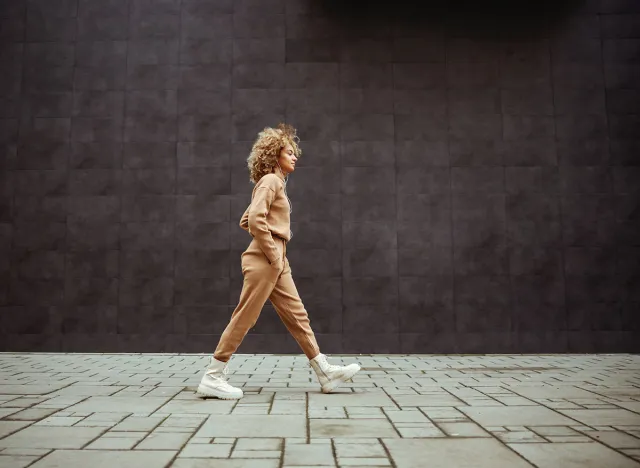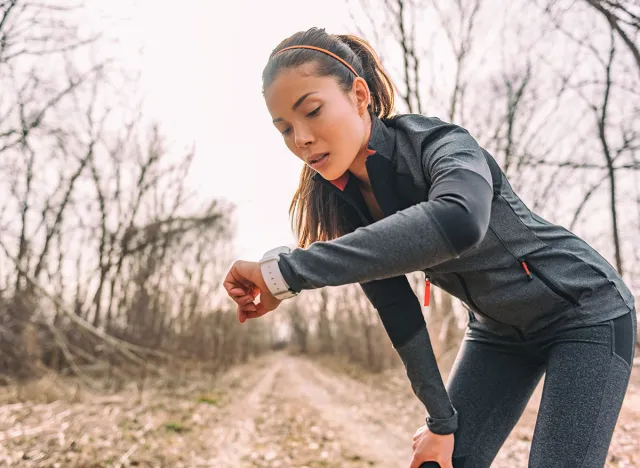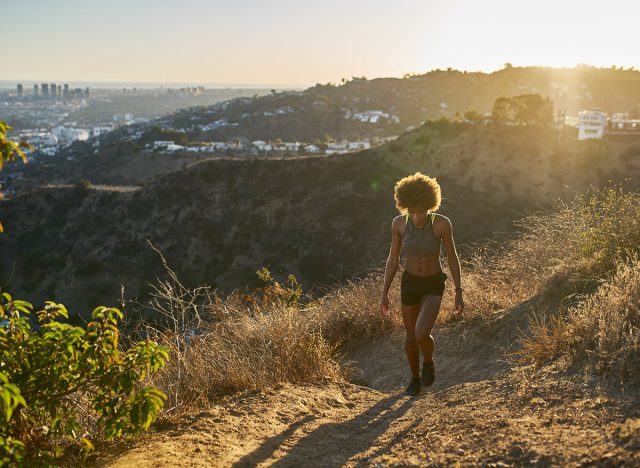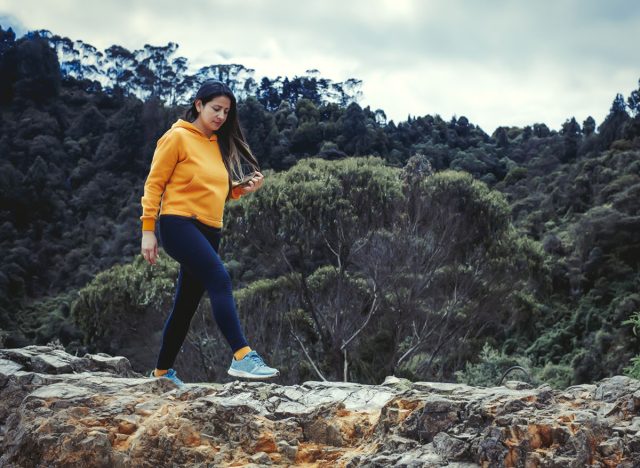Here's How to Drop 1 Pound Per Week With Walking, Says Camila Cabello's Trainer
You don't have to hit the gym in order to lose weight. In fact, all you need is a pair of sneakers and a treadmill, sidewalk, or trail. "Walking is one of the easiest forms of exercise to add to your daily routine, offering many benefits both mentally and physically," celebrity fitness trainer and health and wellness expert Jenna Willis tells Body Network. The Los Angeles-based fitness expert, whose clients include Camila Cabello and Lala Kent, reveals a few ways to maximize your weight loss via walking and dropping up to one pound per week in the process.
You Can Burn 150 Calories by Walking for 30 Minutes Per Day

Willis maintains that there is science backing up the weight loss benefits of walking. "Studies show if you add just 30 minutes of brisk walking to your daily routine, you could burn approximately 150 more calories a day," she says.
Walking Is Also a "Gateway Drug" to More Exercise

She also maintains that walking is the greatest "gateway drug" to more exercise and building healthy lifestyle habits, "taking your fitness journey to the next level," she says. "Carving out time for walks allows you to realize you also have time for workouts!"
Related: 12 Surefire Ways to Lose Abdominal Fat, Say Experts
Aim for a Heart Rate of 60 BPM

In order to maximize weight loss, wear a heart rate monitor. "I recommend getting your heart rate up to 60% of your maximum heart rate. To get a target heart rate for walking, simply subtract your age from 220 and multiply that by 60% or 0.60," she says.
Incline

If you really want to feel the burn, "adding an incline to your walk will help burn more calories," says Willis. "Even just a 1 percent incline burns roughly 12 percent more calories," she reveals. "There are 3,500 calories in one pound, so that's a lot of steps to take in one day (approximately 70,000). But, taking that walk on an incline makes you MUCH MORE likely to shed the weight with a diet that supports your goals."
Related: 15 Quick Ways to Lose Body Fat Percentage in a Week
There Are Other Health Benefits of Walking

Weight loss isn't the only health perk of walking. One study published in JAMA Internal Medicine found that walking at a brisk pace for about 30 minutes a day led to a reduced risk of heart disease, cancer, dementia and death, compared with walking a similar number of steps but at a slower pace.
💪🔥Body Booster: Next time you are walking on a treadmill, try adding an incline – even just 1 percent – and maximize your burn. And if you enjoyed this article, take advantage of these 15 Quick Ways to Lose Body Fat Percentage in a Week.





